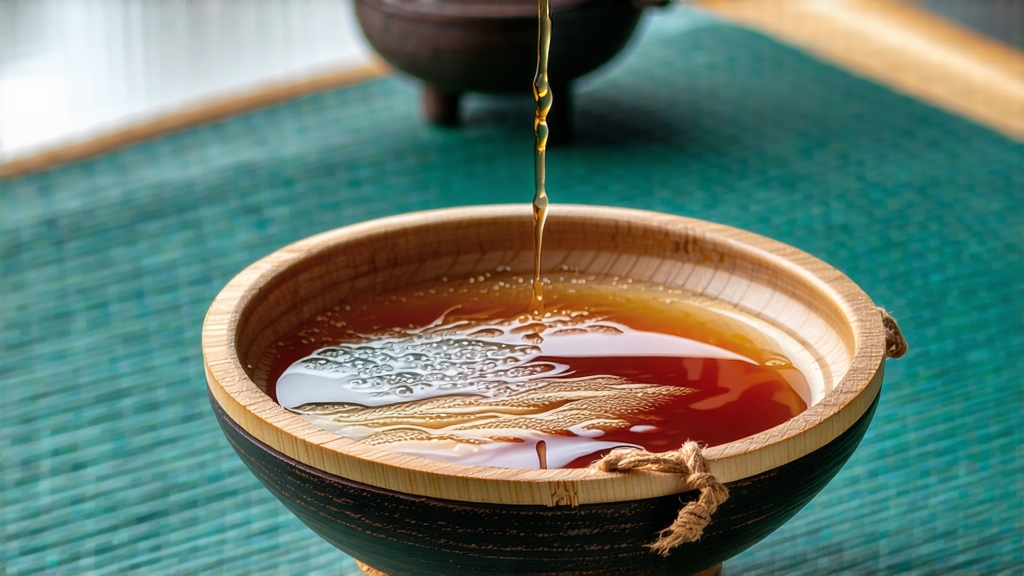
If oolong were a language, Phoenix Dancong would be its most lyrical dialect. Grown on the steep, granite spines of Phoenix Mountain in northern Guangdong, this tea is not a garden blend but a collection of individual trees, each genetically distinct and named after the fragrance it naturally mimics—honeysuckle, almond, gardenia, ginger flower, even bitter orange. To the farmers who have cared for these trees since the Song dynasty, Dancong means “single bush,” a reminder that every batch originates from one identifiable plant, often centuries old, rooted in crevices so narrow that pickers tie themselves to bamboo stakes while harvesting.
The written record begins in 960 CE, when Song imperial officers stationed at Chaozhou petitioned the court to tax the “fragrant rock tea” carried down by the She ethnic minority. By the Ming, local gazetteers noted that “the woodsmen of Wudong peak barter tea for salt, one tael of leaf worth three of silver.” The Qing saw the first intentional grafting of especially aromatic mother trees, giving rise to the cultivar library now catalogued by the Chaozhou government: 79 aromatic profiles, 12 protected designations, and 2,400 individual ancient trees under state guardianship.
Botanically, Phoenix Dancong belongs to the Camellia sinensis var. sinensis species, yet its leaves are longer, thicker, and more deeply serrated than those of Fujian oolongs. The mountain’s diurnal temperature swing—often 15 °C within a single spring day—slows photosynthesis, concentrating aromatic precursors. Ultramafic soils, rich in iron and magnesium, add a flinty minerality that lingers on the back palate. Most prized are the trees above 800 m in the Wudong core zone; at these elevations, morning fog refracts sunlight into a soft, bluish spectrum that encourages the synthesis of ionone and linalool, compounds responsible for peach and orchid notes.
Crafting Dancong is a ten-act drama spread across thirty-six hours. Picking begins at dawn when two leaves and a bud still hold morning dew; any later and the volatiles evaporate. The pluck is carried in open bamboo baskets to prevent bruising, then spread no thicker than two fingers under the sun for twenty minutes—just long enough for the edges to lose their brittleness. Indoors, the leaf is alternately shaken and rested on rattan trays for six cycles through the night. This yaoqing (“rocking green”) phase is where the tea learns its future song: gentle bruising ruptures cell walls, allowing catechins and polyphenol oxidase to meet oxygen and create theaflavins that will later polymerize into aromatic esters. By dawn, the leaf emits a perfume so intense that workers claim they can identify the mother tree blindfolded.
Shaqing, the kill-green step, is brief but decisive. Leaves are tossed into a 280 °C drum for ninety seconds; the goal is to halt oxidation at 30 %, leaving the center jade while the rim turns amber. Rolling follows, first mechanically to break surface wax, then by hand to twist the leaf into the signature strip shape that resembles a dark eyebrow. What sets Dancong apart is its charcoal baking, done in a squat clay oven fueled by lychee wood that burns low and long. Over six hours the tea is sifted, turned, and stacked in cloth-wrapped piles; temperatures rise from 60 °C to 120 °C in stair-step fashion, driving moisture from 8 % to 3 % while pyrolyzing sugars into caramel and furanone compounds. A master baker judges readiness not with thermometers but by ear: when the leaf crackles like thin ice underfoot, it is done.
The result is a leaf that looks almost black yet brews the color of topaz. Aroma is the first examiner: dry leaf smells of dried apricot and toasted almond; after the rinse, hot vapors carry hints of jasmine and baked sweet potato. The first infusion, 95 °C water for fifteen seconds, yields a liquor bright as late-afternoon sunlight, its entry sweet and expansive, coating the tongue like warm honey. Acidity arrives second, a mandarin-like snap that lifts the palate, followed by a minerality reminiscent of wet slate. The finish, what Chaozhou locals call yun, is a cooling sensation in the throat that can last twenty minutes, during which the